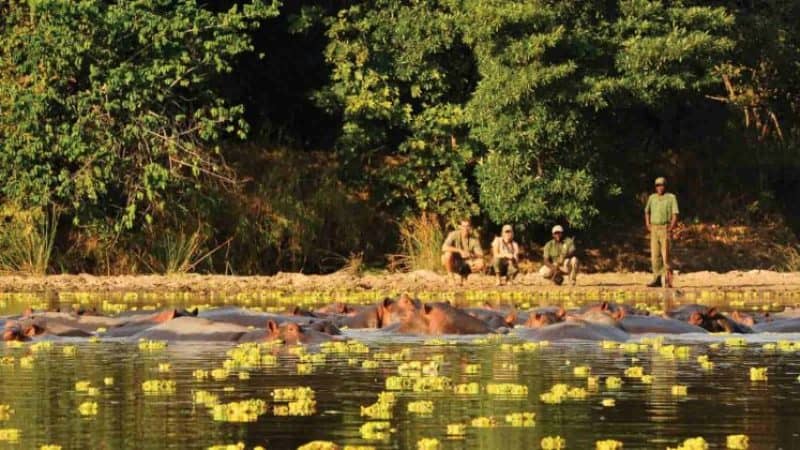A lot has been written about the emergence of Ethiopia and Mozambique, and the changing dynamic of investing in Africa. Ethiopia is the continent’s second most populous country, with high potential for a consumer-driven boom, while Mozambique is fast rising as a potential energy hub. Throw in Angola’s oil boom and Tanzania’s energy potential, and most observers would say that you have covered the new south-east Africa investment climate. But that conclusion fails to include the quietly rising Zambia, the landlocked country that is home to nearly 14 million people.
Privatization and strong mineral prices, in particular copper, have given a boost to the country’s mines over the last few years. The Zambian government has capitalized on this, investing heavily in building its private sector. Other industries have consequently performed well in the midst of this boom, positioning the country for continued growth.
Here’s a list of some of the top investment opportunities in Zambia:
Manufacturing

Manufacturing possesses the biggest opportunity for growth. The sector contributes slightly more than 8 percent to GDP, which is relatively small compared to other African countries. But the government’s introduction of Multi-Facility Economic Zones (MFEZs) complements other critical elements available to this sector – cheap labor, vast raw materials, and abundant land. The government also introduced significant investment incentives – zero percent corporate tax for the first five years from the first year of profit, as well as zero import duties on raw materials, capital goods and machinery for the first five years of operating in the zone – which compare well to other countries in the Southern African Development Community (SADC) and Common Market for Eastern and Southern Africa (COMESA).
A booming mining sector boosts the demand for manufacturing locally and adds a significant amount of capital to local investment. New controversial mining tax laws will keep more money onshore and complement a relatively strong banking sector. Domestic consumption of manufactured products, including agricultural fertilizers and construction materials, have skyrocketed as Zambians’ pockets have grown (based on GDP per capita) by an average of 14 percent annually from 2009 to 2012. There is no sign that this demand will slow down any time soon, especially since the International Monetary Fund (IMF) predicts Zambia to be the 9th fastest growing in the world from 2011 to 2015.
Agribusiness

The agriculture sector provides the greatest opportunity for impact and development. The sector generates around 21 percent of GDP and employs an estimated 67 percent of the national workforce (of which most are smallholder farmers). Potentially arable land covers 47 percent of the country, but currently, only 15 percent is being cultivated. As a member of SADC and COMESA, Zambia has easy access to growing consumer markets. It is also strategically located near other booming countries, including Tanzania, Angola and Mozambique.
Maize production currently has not done well, with 2013 forecasted to be lower than the previous year. The removal of the maize subsidies will further complicate the crop’s production. As a cash and staple crop for the economy, production requires commercial investment. The government has moved slowly in liberalizing the production around the staple crops, including rice, millet and cassava. Policy discussions and growing production gaps will create vast opportunity over the next five years. For example, the country offers zero corporate tax for the initial five years from the first year profits that are made in the agriculture sector.
Agro-processing of tobacco, soya beans, tea and coffee will fill the coffers as their cash value stays strong and their processed and packaged end-products garner more than 10 times the price in developed markets than the locally sold unprocessed product. Fishery also possesses great potential with 15 million hectares of water and a rapidly growing domestic consumption.
Electricity and Power

Despite (and as a result of) tremendous economic growth, Zambia still grapples with power outages, specifically during peak hours. Experts estimate that the country needs to double power generation capacity over the next five years. The government continues to pursue aggressive opportunities such as the development of transmission inter-connectors with neighboring countries, including the Democratic Republic of the Congo (DRC), Kenya and Tanzania.
Zambia possesses 6,000 MW worth of potential energy from hydropower, yet the country has only developed 1,700 MW of that potential. Installed capacity is estimated at 1,800 MW, of which only 1,400 MW is believed to be available. A peak demand of approximately 1,725 MW and a 10% required reserve requirement underscores the opportunity for developing hydropower.
The removal of fuel subsidies earlier this year continues to push up gasoline and diesel prices. The price increase consequently raises business costs and the inefficiency of using fuel products as energy sources. Rising demand in power especially as the country tries to boost access to electricity – at 18.5% of the population as of 2012 – will weigh heavily on the current power infrastructure. Investing in power may be the most imperative measure for the government if the mining sector is to continue its rise.

